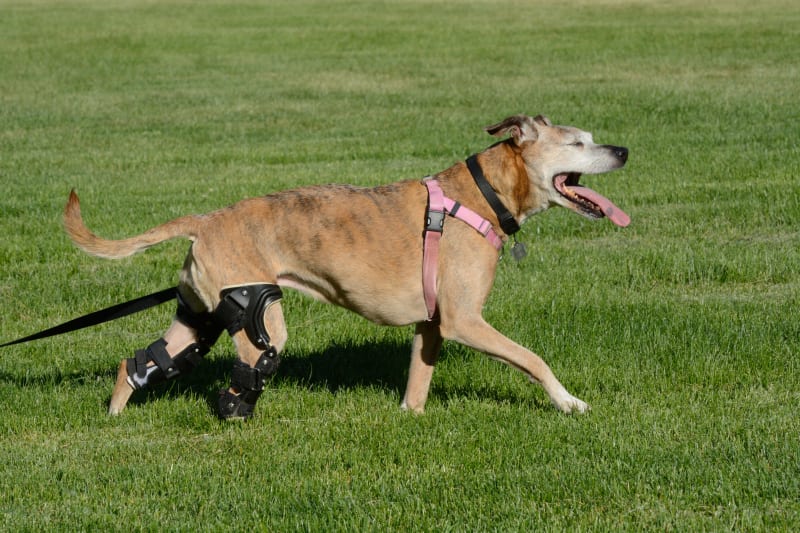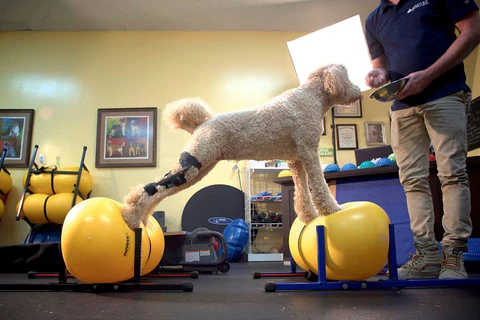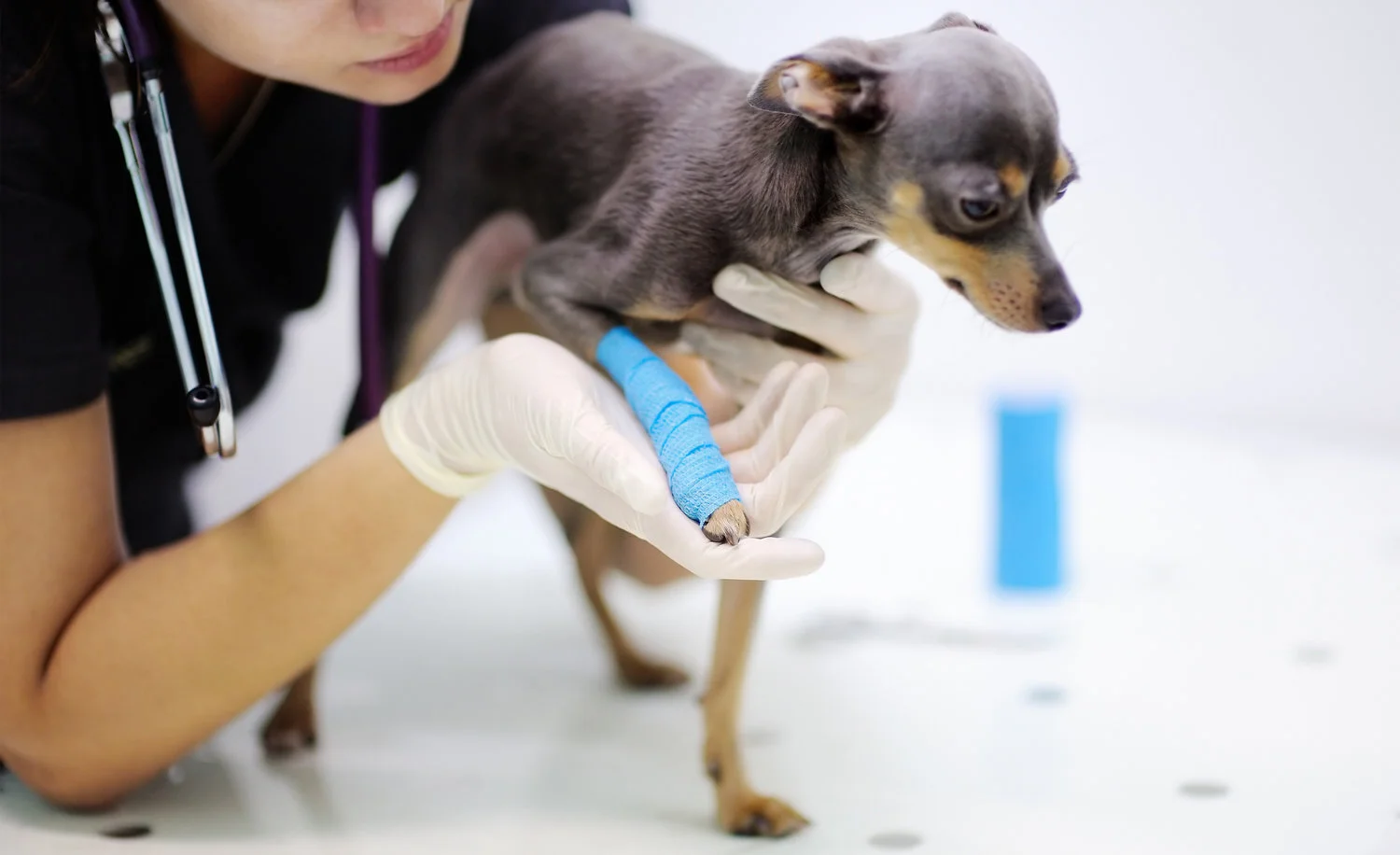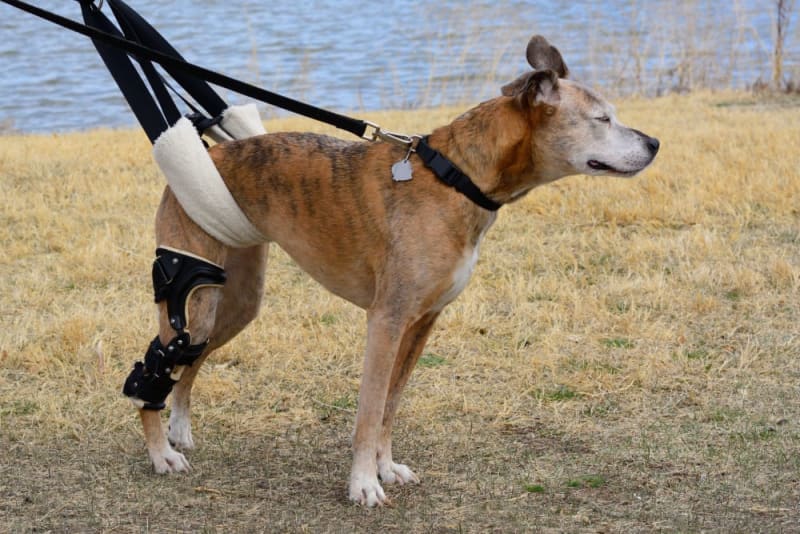Dog Knee Surgery 2025: Evidence-Based Advice on Treatment and Recovery – If you have had a limping dog or find your dog is unable to place weight on one of the back legs, then you are not alone. The same concern is raised by thousands of pet owners annually – a torn cranial cruciate ligament (CCL), a kind of ACL of a dog. In case of tearing of this ligament, the knee joint becomes unstable and painful. In most situations, the most effective solution is dog knee surgery to restore comfort and mobility.
The good news? By 2025, there will be enhanced surgical procedures and rehabilitation programs that ensure the highest level of recovery. Nevertheless, it is always good to know what you have to choose, and recovery rates have never been high. However, it is always good to know what you have to choose, and what the recovery process is like, to make the best decisions in favor of your furry friend.

What Happens During Dog Knee Surgery
Dog knee surgery is most commonly referred to as the repair of a torn CCL. The three surgical options include:
Tibial Plateau Leveling Osteotomy (TPLO): The most frequently used procedure, particularly in large or active dogs. It changes the weight-bearing position of the knee by cutting and rotating the bone of tibia to stabilize the joint.
Tibial Tuberosity Advancement (TTA): This is like TPLO except that it changes the bone orientation differently.
Extracapsular Repair (Lateral Suture): This is a less invasive repair procedure commonly applied to smaller dogs or partial tears.
The correct choice of the process is conditional on the size of your dog, its activity, its age, and the severity of the tear.
What does the Most Current Evidence Tell about Treatment and Recovery?
Success Rates
The modern-day success rate of CCL surgery is impressive:
- As per the Animal Care Center, TPLO surgery is effective in restoring normal or near normal leg function to 90-95% of dogs.
- As per Sustainable Vet’s Long-term studies indicate that more than 90% of the dogs continue to walk normally even up to 6 years later.
Research by BMC Vetres also found that approximately 30% of the dogs experience some chronic discomfort and 40-50% exhibit a limited range of motion many years later.
Typical Recovery Timeline
| Time Period | What Happens |
| 0-2 weeks | Rest and restricted activity. The majority of dogs start to gradually put weight on the leg in a few days. |
| 2-8 weeks | Leash walks of short duration and control. Physical therapy often begins |
| 3-6 months | Slow recovery of normal activity. Running and jumping are not introduced at the same time. |
| 6-12 months | The majority of the dogs are back in full strength, and constant care of the joints is key. |
The amount of osteoarthritis is nearly unavoidable even after a complete recovery – the idea is to reduce the progression speed and ensure that your dog does not experience any pain.
Tips for a Smooth Recovery
Stick to the plan. The rehab plan of your vet is equally important as the surgery.
The management of weight plays an important role. An additional couple of pounds causes significant pressure on joints.
Restrict vigorous exercises. Do not use stairs, jump, or slippery floors at an early on.
Rehab is the difference. Physical therapy has the potential to increase results by an enormous amount.
Support long-term joint health. The preservation of mobility is achieved through joint supplements, hydrotherapy, and low-impact exercise.
One more point – dogs, which have surgery on one knee, have a 30-50% of chances to injure the ligament in the other leg later. This is why avoiding obesity and keeping the muscles in shape are so important.
Conclusion
In 2025, injured dogs will have an actual opportunity to walk, run, and play again thanks to dog knee surgery, which frequently makes them even stronger as a result. The surgery is just halfway; the rest is relying on rehab, proper dieting, and plenty of patience.
Most dogs live long, happy, and active lives after surgery with proper treatment. When your dog is experiencing a CCL tear, consult your veterinarian or board-certified orthopedic surgeon about which method is best – and do not be shy to inquire about recovery, recovery timelines, expenses, and care at home.
The informed decisions will add years of tail wagging and trail walks to come because when it comes to the knees of your dog, the informed decisions will count.
FAQs
How much time does my dog take to recuperate?
The dogs begin to walk on the leg within a week, though full recovery normally requires 4-6 months. Smaller or younger dogs will recover more quickly, and old or heavy dogs may take more time.
What is the success rate of dog knee surgery?
By using current surgeries such as TPLO, 90-95% of dogs go back to active life without limping.
Will the dog develop arthritis post-surgery?
Yes, but surgery contributes to the delay and reduction of its severity. Many years down the line, with proper care, dogs remain comfortable.
Would the other knee get hurt, as well?
It is a pain, but to be honest, yes – one out of every three dogs has a possible chance of tearing the other knee ligament. Your best prevention is to keep your dog at a healthy weight and make sure it is active.
Are there any risks associated with the surgery?
Just as in any operation, complications may occur – infection, implant problems, or delayed healing. The infection rate of TPLO surgeries was reported to be between 8-17% but most can be treated.








